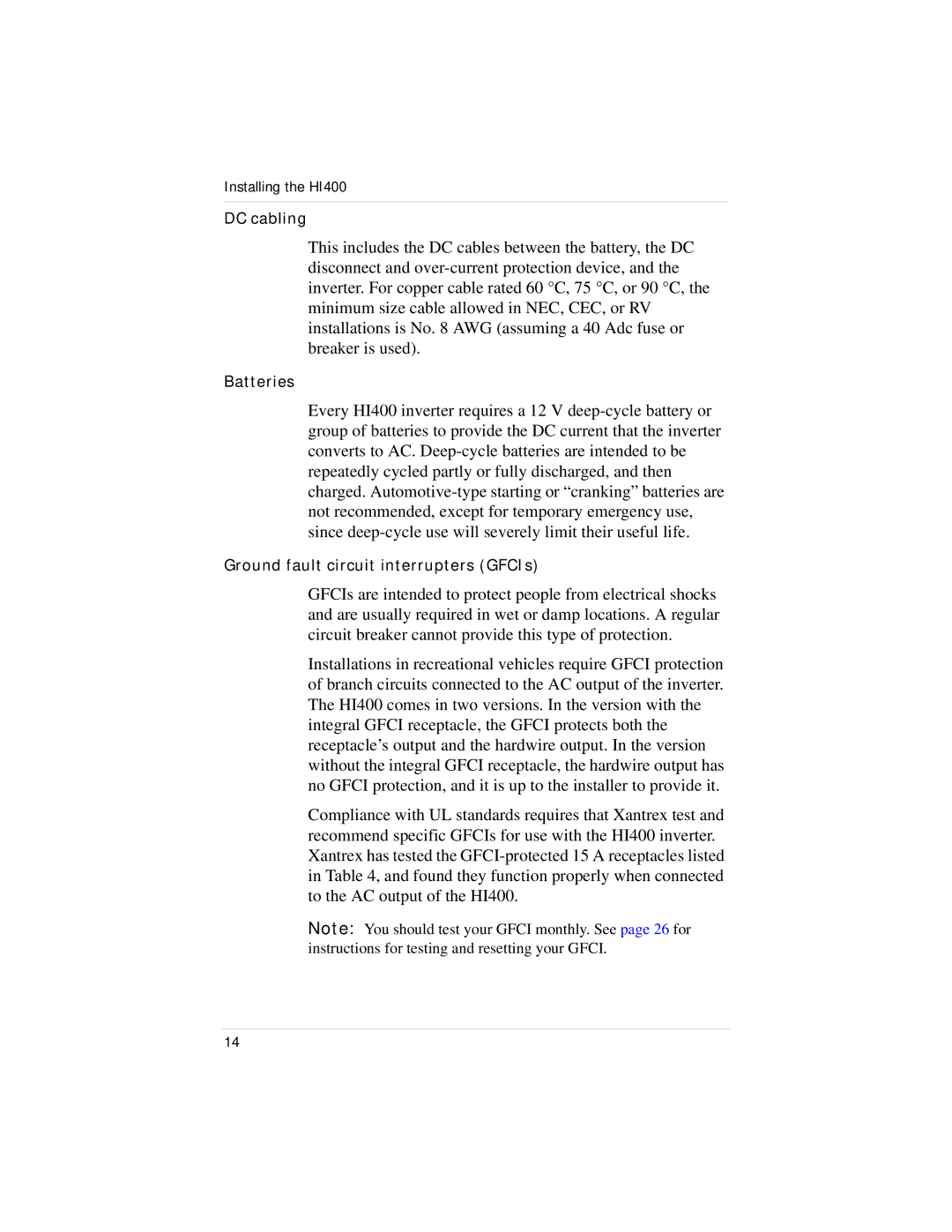HI400 specifications
Xantrex Technology HI400 is a high-performance, pure sine wave inverter designed for a variety of off-grid and backup power applications. Renowned for its efficiency and reliability, the HI400 provides an output of 400 watts, making it suitable for powering sensitive electronic devices and appliances, such as laptops, medical equipment, and home entertainment systems. Its pure sine wave output ensures that the devices operate smoothly, without causing interference or damage.One of the main features of the HI400 is its advanced surge capability. This inverter can deliver short bursts of power significantly higher than its rated output, allowing it to start devices with high inrush currents, like refrigerators and air conditioners. The inverter is equipped with a built-in transfer switch for seamless switchover between grid power and inverter power, ensuring uninterrupted operation during power outages.
The HI400 incorporates Xantrex’s proprietary technology, which enhances its durability and operational efficiency. The inverter features a high-frequency design that minimizes energy losses, resulting in a lower overall power consumption. It also operates quietly, making it ideal for use in residential environments where noise might be a concern.
Another characteristic of the HI400 is its lightweight and compact design, which facilitates easy installation and portability. The unit can be mounted in various locations, making it versatile for both mobile and stationary applications. The inverter comes with a range of safety features, including overload protection, short-circuit protection, and thermal shutdown, ensuring that it operates safely and prolongs its lifespan.
User-friendly features enhance the overall appeal of the HI400. It includes LED indicators that provide real-time information about the operational status, such as input voltage, output load, and fault conditions. This enables users to easily monitor performance and troubleshoot any issues that may arise.
Overall, the Xantrex Technology HI400 stands out as a reliable and efficient power inverter solution. Its combination of advanced technologies, safety features, and user-friendly design makes it a go-to choice for anyone looking to power their devices off the grid or during emergencies.

